The COSMIAC Executive Team

Christos Christodoulou, Director
Professor Christos Christodoulou is a co-founder of COSMIAC. His research interests are in the areas of modeling of electromagnetic systems, FPGA reconfigurable systems, and smart RF/photonics. He was responsible for leading the COSMIAC collaboration between Government, Industry, and Academia to ensure design success and deployment of programmable logic in space, military, and civil applications as well as developing the long-term plans for the Center. Dr. Christodoulou received his Ph.D. in Electrical Engineering from North Carolina State University in 1985. He served as a faculty member at the University of Central Florida, Orlando, from 1985 to 1998. In 1999, he joined the faculty of UNM’s Electrical and Computer Engineering Department, where he served as the Chair of the Department through 2005. Dr. Christodoulou is an IEEE Fellow.
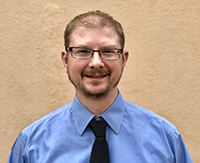
Steve Lindsley, Deputy Director
Steve Lindsley has completed his MSME from The University of New Mexico, focusing on kinetic sculpture and photography. He is currently in the MSME program at UNM, focusing on space systems, controls, and dynamics. During his first year at COSMIAC, he concentrated on machine learning centered around computer vision and additive manufacturing. He spent two years learning to program robot behaviors for swarm robotics while participating in the NASA Swarmathon competition at Kennedy Space Center. He has also played an instrumental role in creating and developing a custom vertical take-off and landing (VTOL) drone for testing volcanic plume emissions. Before returning to school, he worked in biotechnology manufacturing high throughput flow cytometry systems, shop floor control, inventory control, and design and fabrication of manufacturing aids. He enjoys mountain biking, Overlanding, vehicle restoration and modification, drone fabrication and flight, 3D printing, and metal casting in his personal time.

Maria Daw, Senior Program Manager
Ms. Maria Daw is the Senior Program Manager of the COSMIAC Research Center. She has been working for The University of New Mexico since August of 2005, and with COSMIAC since August 2013. She earned her Bachelor’s in Business Administration (BBA) and her Executive Masters in Business Administration (EMBA) from the Anderson School of Management. Maria’s duties involve business planning, development, and establishing new program funding sources for a multimillion-dollar university-affiliated research center at UNM. Maria is the main contact for employing, training, supervising, directing, and evaluating the research center staff, students, and daily administrative research functions. She establishes, manages, and tracks financial data for annual budgets to ensure compliance with established management systems and standards. A large number of COSMIAC’s awards are multifaceted programs, consisting of multiple funders and a wide variety of awards that range across the entire front of contract types. Maria’s job is to understand and manage all aspects of each of these types of contracting vehicles. She also assists in proposal preparation, submission, and contract negotiations as needed/required. She is seen as the main interface to COSMIAC, and as such works directly with the Director to establish the strategic direction of the center to ensure that it remains on the path to accomplishing these intentions.

Jim Aarestad, Chief Scientist
Dr. Jim Aarestad serves as Chief Scientist for COSMIAC. Dr. Aarestad received his B.S. and M.S. degrees in Computer Engineering from The University of New Mexico in 2009 and 2011 respectively. He earned his Ph.D. in Engineering, also from the University of New Mexico. Dr. Aarestad’s graduate research centered on research and development of VLSI primitives for hardware security, including physical unclonable functions (PUFs) and hardware Trojan detection methodologies. His research interests include the application of highly robust and highly secure embedded system design methods for aerospace and terrestrial applications. He has numerous conference and journal publications and has presented his research at several national conferences. Dr. Aarestad has developed the embedded flight software for numerous space-based payload modules, along with educational materials and training programs to advance the teaching of FPGA-based embedded system concepts. He is also engaged in a research project to better understand and mitigate the susceptibility of cryptographic computing resources to power analysis attacks. Dr. Aarestad has, for several years, provided engineering consultation to the U.S. Air Force in support of its development of next-generation Global Navigation Satellite Systems (GNSS). He is also a research professor at The University of New Mexico’s Electrical & Computer Engineering department, and has taught and developed numerous courses in programming, computer hardware design, and satellite navigation receiver design. Finally, Dr. Aarestad is the director of COSMIAC’s Embedded and Reconfigurable Systems Laboratory, with an emphasis on providing student research opportunities in the areas of FPGA and microprocessor systems for machine learning and the Internet-of-Things (IoT).

Andrew Cochrane, Chief Engineer
Andrew hails from Alaska where he grew up and became a commercial fisherman to pay for engineering school. His last summer between semesters at the University of Alaska Anchorage, he got a taste of graduate life in Albuquerque through The University of New Mexico’s (UNM) Nanoscience and Microsystems (NSMS) Research Experience for Undergraduates. After completing his undergraduate degrees in Electrical and Mechanical Engineering in 2012 he returned to Albuquerque for grad school. He finished his MS with the NSMS Professional Science Masters cohort of 2013 when he studied both physical and business aspects of the fields of nanotechnology and
Now a doctor, Andrew has joined COSMIAC at
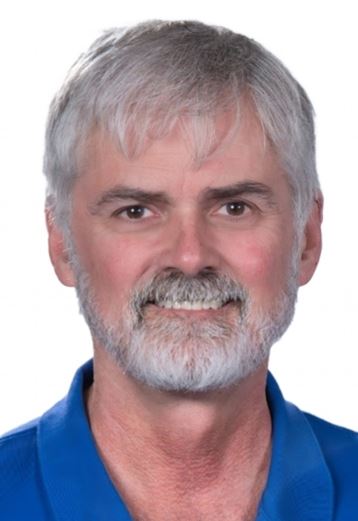
Craig J. Kief, Director of Innovation
Mr. Craig J. Kief serves as the Director of Innovation at COSMIAC where he directs the vision of future proposals and contracting activities. Mr. Kief serves as retired Research Faculty at The University of New Mexico, retired Air Force and has over 32 years of experience in computer engineering and satellite communications, including voice and data networks, testing, troubleshooting, debugging, system administration, embedded software, software/hardware integration, and network monitoring. He is responsible for maintaining two separate satellite ground stations operating 24 hours a day. He has a B.S. and M.S. in Computer Engineering from The University of New Mexico. He has published and taught in the areas of digital and programmable logic, satellite design, and in verification and validation of systems. He is also an IEEE senior member.
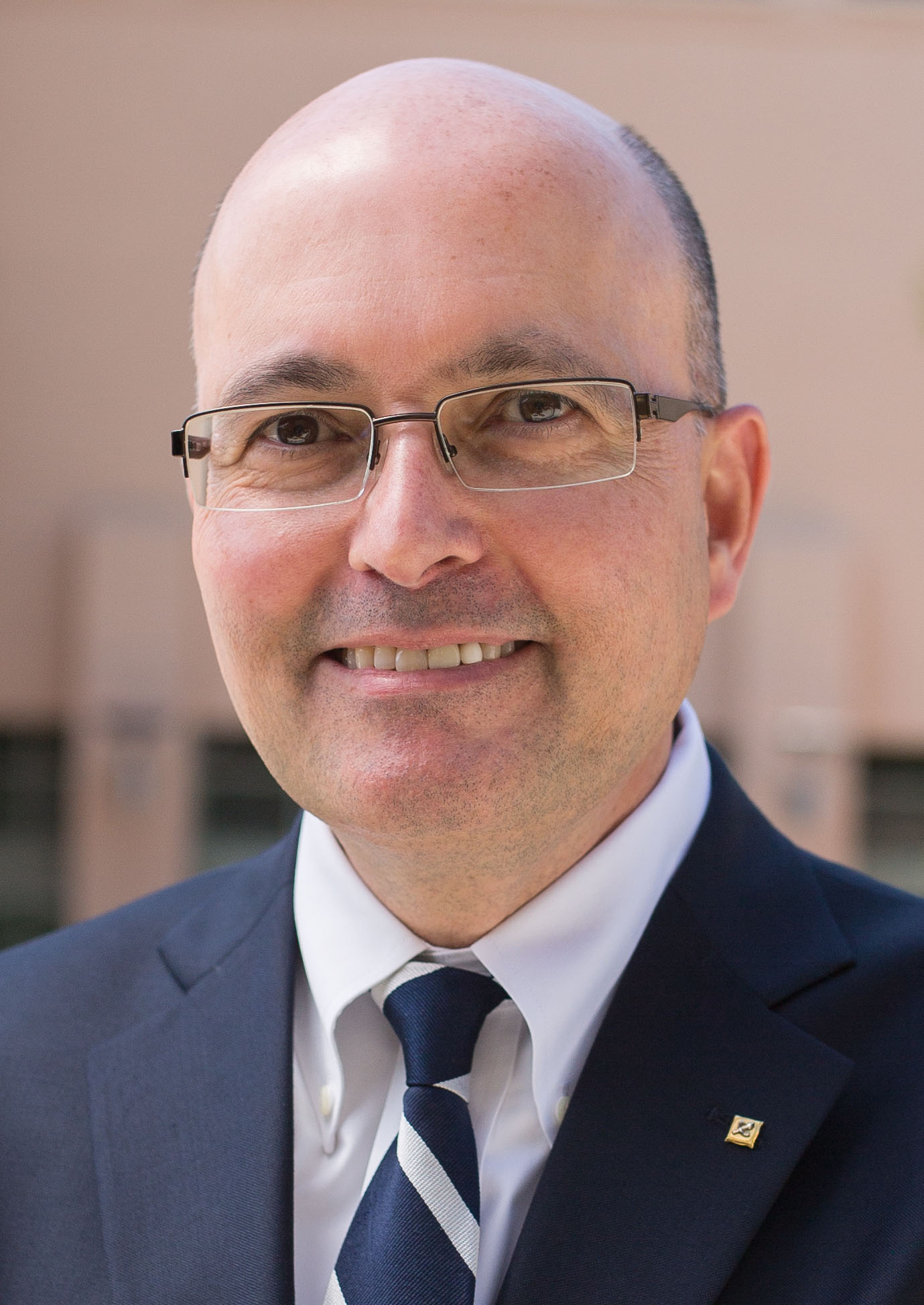
Edl Schamiloglu, Director, Directed Energy Center
Edl Schamiloglu is an American physicist, electrical engineer, pulsed power expert, inventor, and distinguished professor in the department of electrical and computer engineering at The University of New Mexico. He received his B.S. and M.S. degrees from Columbia University, New York, NY in 1979 and 1981, respectively. He received his Ph.D. degree from Cornell University in 1988. He joined The University of New Mexico as Assistant Professor in 1988. He is a Fellow of the IEEE and a Fellow of the American Physical Society. He has received numerous awards, most recently the 2019 (inaugural) IEEE NPSS Magne “Kris” Kristiansen Award “For outstanding contributions in experimental nuclear and plasma science.” At The University of New Mexico, he also serves as the Special Assistant to the Provost for Laboratory Relations. In 2021 he founded the Director Energy Center at The University of New Mexico (DEC@UNM). He has published three books related to directed energy microwaves.
The COSMIAC Team

Brandyn Solano, Research Engineer
Brandyn Solano received his Bachelor of Science in Computer Engineering from the University of New Mexico in 2023. During his time with UNM Cosmiac, Brandyn has developed his knowledge of PCB design and manufacture, and their applications to radiation effects testing. Building on this foundation, Brandyn is now pursuing a Master of Science in Computer Engineering at UNM, with a concentration in computer architecture and VLSI design to further advance his skills. Brandyn's primary role at COSMIAC is supporting contracts that need reliable, dependable, and high-quality PCB designs. He currently is working on managing a small team of students to help with the SSPIDR effort in space beaming applications.

Chad Rathbun, Research Engineer
Mr. Rathbun received his Bachelor of Science in Mechanical Engineering at The University of New Mexico in 2022 and is currently working towards his Master of Science in Mechanical Engineering. Mr. Rathbun’s focus as an undergrade working for COSMIAC was on a contract with the Air Force Research Laboratories (AFRL) Deployable structures group at Kirtland Air Force Base. This is where he worked on researching new technologies and techniques for deploying structures like solar panels and antennas. He also helped in developing small space craft that could have high performances abilities around other space craft. He is currently working with the AFRL cyber security to get a payload on the next NASA STP-Sat 7 Mission. He also is working with the SSPIDR team at AFRL on the risk buy down of their concept space craft. In addition, Mr. Rathbun works with MIMYR designing and conducting CFD simulations on a product to implement 3D printers on ships at sea.
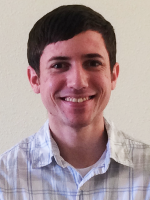
Fernando Miguel Parra, Software Engineer
Fernando received his bachelor's and master's degrees in computer science from The University of New Mexico. During graduate school, he worked at AFRL developing simulations to test the performance of different task allocation algorithms in multi-satellite systems. Previous work also includes development on the ground system software used by the Air Force's Multi-Mission Satellite Operations Center and writing automated tests for emTRUTH's APIs used to manage data on a blockchain. Currently, Fernando works with KBR on developing an interactive web application that presents DTRA's capabilities. Additionally, he's working with Counter Drone on integrating drones into security systems for autonomous patrols and responses to security events.

Leilani Baker, Research Engineer
Leilani Baker received her Bachelor of Science in mechanical engineering with a minor in management. She is currently working toward her Master of Science in mechanical engineering. Leilani played college soccer at the University of New Mexico for 6 years and received multiple awards while getting her undergraduate degree. Leilani is now a Research Engineer at UNM’s COSMIAC working in collaboration with SSPIDR, designing the mechanical demonstration as well as gaining experience as a systems engineer. Leilani’s additional research includes the study of high-temperature vacuum sintering of 3D printed ceramics and semiconductors, as well as research on designing and developing a solar tracker that aims to match commercial power with spatial awareness.

Zack Daniels, Research Engineer
Zack Daniels is an electrical engineer who received his MSEE from The University of New Mexico in 2022. He has been with COSMIAC since 2018, and has assisted with several projects with a wide range of work including physical mapping of bit upsets in computer memory stacks, research and development for blockchain-backed systems engineering software, and the development and implementation of embedded systems for a ground-based power beaming experiment. His career interests reside primarily in control systems and robotics, and he would eventually like to work on deep sea submersibles for oceanographic research. In his free time he enjoys woodworking, creating interactive multimedia, hacking (destroying) his personal electronics, and occasionally writing music.
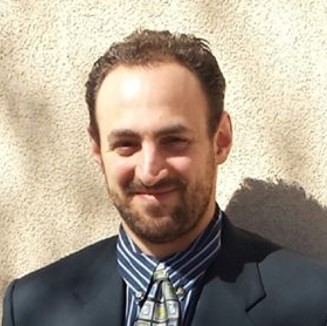
John Plumley, Research Engineer
Dr. John Plumley earned his BS in Chemical Engineering and his MS and PhD in Nanoscience and Microsystems from The University of New Mexico (UNM). He is currently designing and testing bipropellant-consuming solid oxide fuel cell systems in collaboration with Air Force Research Laboratories (AFRL). Dr. Plumley has been involved in several AFRL collaborations during his post-doctoral appointment with UNM, which include reversible electrochemical mirror device development, passive radiative cooling testing, and fabrication of resistive switching devices. He also conducted additional post-doc research in collaboration with Sandia National Labs studying the effects of applied stress on corrosion and pitting in stainless steel.)

Haylie Orozco, Research Engineer (LAT)
Mrs. Haylie Orozco has completed her degree in chemical engineering with a focus on materials processing and she is now working at Sandia Laboratories. Her interests are broad, though in particular, she enjoys physical chemistry and the synthesis of nanomaterials. Haylie’s experience involves a collaboration with Nasa Ames Research Center located in California's Silicon Valley researching thermal analysis of lithium-ion batteries for LEO satellites. She then worked with AFRL Space Vehicles and Energy directorates characterizing engineered semiconductors and ceramics of particular interest to missile detection sensors and microwave power transfer. Currently, Haylie contributes to an investigation of high-temperature vacuum sintering of 3D printed ceramics and semiconductors and is working to apply polymer derivation techniques. Additionally, Haylie assists in developing a basis for mission assurance of future AFRL satellite launches with the Center for Rapid Innovation.

Benjamin Rutherford, Research Engineer
Benjamin Rutherford received his Bachelor of Science and Master of Science degrees in Computer Engineering from The University of New Mexico, with an emphasis in computer architecture and VLSI design. With extensive experience at UNM COSMIAC, Benjamin has developed expertise in FPGA and PCB design, radiation effects testing, and multidisciplinary team leadership. He currently serves as a Senior Radiation Effects Engineer and Principal Investigator for all radiation-related contracts at COSMIAC. Benjamin established the COSMIAC Radiation Effects Laboratory and manages a team of researchers while overseeing contract compliance and strategic planning. He has led radiation tests at a wide range of national facilities and continues to drive the advancement of test methodologies and hardware design for radiation effects analysis.

Luis Hernandez, Research Engineer
Mr. Luis Hernandez has completed his MSME from The University of New Mexico. Hernandez has worked at AFRL’s space vehicles directorate under the Spacecraft Charging and Instrument Calibration Laboratory (SCICL). He tested the characteristics of electrostatic discharges in advanced solar array designs by using simulated space weather conditions. His Master’s research was focused on material science and characterizes the effects of an electron irradiated and chemically enhanced polymer used in the space industry. Hernandez currently works with the Advanced GPS Technologies group at AFRL assisting with mechanical design components.
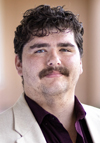
Daniel Joseph Garcia, Research Engineer
Daniel is a graduate from the Department of Electrical and Computer Engineering at UNM, and as Research Engineer at the COSMIAC laboratory he supports research advancing predictive control systems for space cybersecurity, spacecraft power management and distribution, attitude determination and control, and autonomous constellation station keeping. Daniel maintains experience as a principal investigator and has is actively serving as the responsible PI for several funded contracts at The University of New Mexico, including COSMIAC’s several University Nanosatellite Portfolio (UNP) projects. His interests extend beyond space as well, and he has served as a Sekazi Mtingwa scholar, where he studied accelerator physics and technology topics at the US Particle Accelerator School to further his understanding of particle physics and gain a deeper understanding of the intersection advanced predict control modeling for accelerator applications. Further, he is the sole proprietor of a small business focused on providing engineering consulting and implementation in areas of electrical design, system and network administration, and automation technology for homes and businesses across the state of New Mexico.

Allen G. Chavez, Senior Fiscal Services Tech
Allen has been a dedicated employee of UNM since 2015. He provides support to the director, staff, faculty, and students involved in implementing and administering COSMIAC’s objectives. He holds a master of science degree project management and a bachelor’s degree in business administration from Anderson School of Management, with a dual concentration in marketing and operations. He has managed contracts and grants from organizations such as the Air Force Research Laboratory, Northrup Grumman, Lockheed Martin, Sandia, National Science Foundation, NASA, Space Dynamics Laboratory, ATA Aerospace, ATA, Leidos, Blue Origin, and other government agencies.
He also has experience in user experience, research, and strategic analysis, as well as using data to generate comprehensive reports, enabling effective decision-making in areas including planning, inventory, HR, procurement, record keeping, and database management.
Allen prides himself on providing assistance that goes beyond the ordinary, ensuring that no one is left without guidance or support when pursuing their dreams.

Erik Johnson, IT Manager
Erik Johnson provides IT support at COSMIAC. He is currently taking classes at Central New Mexico Community college in order to get his Bachelor’s degree in Electrical Engineering at The University of New Mexico. Erik has worked with computers most of his life and participated in the supercomputing challenge for three years. He’s skilled in problem-solving and computer repair. Erik works with the Director to ensure COSMIAC networks stay operational and that the staff, faculty, and students can work in a secure IT environment.
